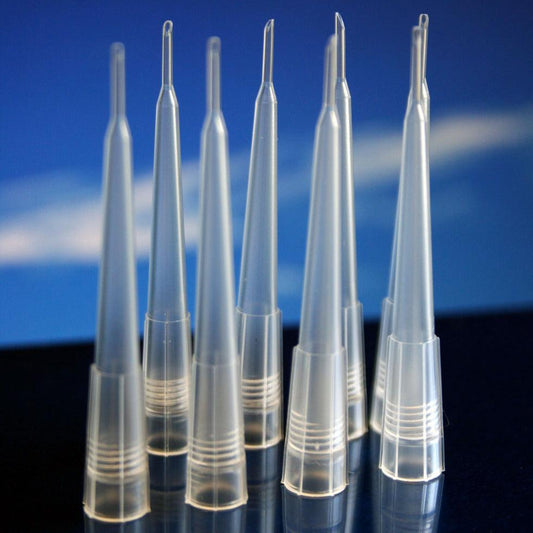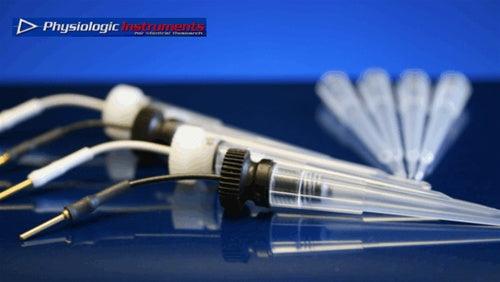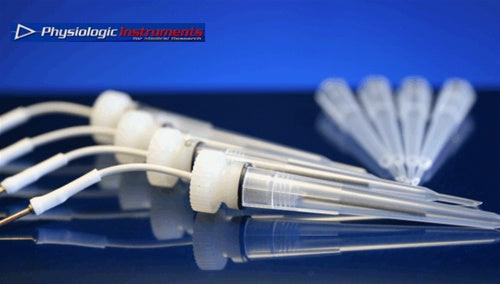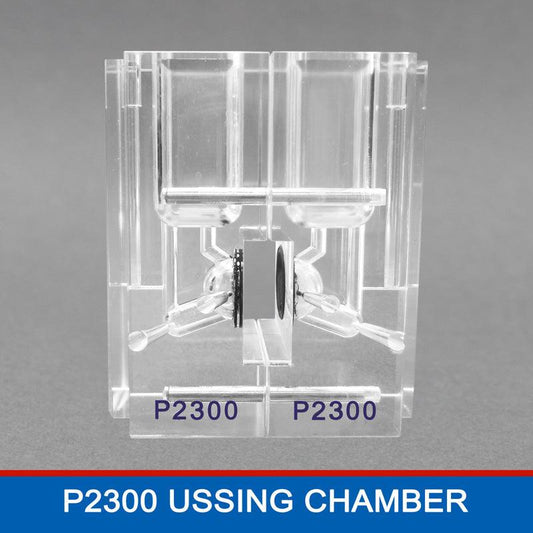Written by: D. Thompson, – Scientist Engineer, Physiologic Instruments
CFTR research has moved into a period of remarkable momentum. Every month brings new data on modulators, novel compound combinations, and insights into how the CFTR protein behaves across different genetic backgrounds. The scientific community is asking increasingly refined questions about gating, stability, and ion transport — questions that depend on precise functional measurement. Even as molecular tools and cellular models continue to improve, the clarity of the electrophysiological signal still shapes the quality of CFTR science.
What many researchers are noticing is that the expectations around CFTR assays have changed. It’s no longer enough to simply confirm that a channel opens. Modern studies look at how quickly CFTR activates after stimulation, the magnitude of current under specific ionic conditions, how the protein responds to new correctors or stabilizers, and how closely ex vivo tissues reflect epithelial function in the clinic. These are subtle, quantitative differences, and they demand measurement systems capable of capturing small but meaningful changes.
Ussing chambers remains the most direct way to track CFTR-dependent ion movement. There are newer approaches in the field — fluorescence-based readouts, organoid swelling assays, imaging tools — but when it comes to understanding physiologic chloride conductance, the electrophysiology signal still anchors interpretation. Many labs use the same conceptual workflow they’ve used for years, but the underlying biological questions have grown more complex. As a result, there’s been a shift toward higher-resolution measurement and a greater appreciation for the variables that allow CFTR currents to be read with confidence.

Why CFTR Function Requires Such Careful Measurement
CFTR is a challenging protein to study because its behavior depends on so many interacting factors. Activation hinges on phosphorylation events, ATP binding, and conformational changes that aren’t always predictable from genotype alone. When researchers evaluate modulators — especially those designed for rare or partially responsive variants — they often see responses that sit right at the edge of detection. A few microamps per square centimeter may look small on paper, but physiologically, those changes can matter.
Clear electrophysiology traces help distinguish true biological differences from background variability. For example, a rare mutation might show a slow, shallow activation curve after forskolin/IBMX stimulation, while a more responsive variant could produce a rapid rise followed by a stable plateau. Distinguishing between those patterns requires low noise, steady temperature control, and consistent tissue geometry. These aren’t cosmetic details; they influence how the cell behaves, and ultimately how the current is interpreted.
The more personalized CF treatment becomes, the more important it is to measure each of these details accurately. Modulators now target specific mechanistic defects: folding, trafficking, gating, stability, or combinations of these mechanisms. Electrophysiology is the method that reveals whether these interventions actually work — and whether they work enough to matter clinically.
A Research Environment Moving Toward Greater Precision
There has always been some variability in how CFTR assays are described in publications. Journals often compress methods sections, focusing on essential protocol steps while leaving out the technical nuances of the recording setup. Yet as the field pushes toward more subtle distinctions — such as comparing modulators for a specific rare allele — the need for clarity has grown.

Researchers increasingly recognize that the electrophysiological environment influences the behavior of the tissue. Variables such as bath composition, fluid volume, electrode stability, temperature uniformity, and clamp responsiveness all contribute to the shape and stability of the current trace. Two labs can use the same cell line and same drugs but arrive at different numerical values if the mechanical environment differs.
Rather than framing this as an issue, many investigators now see it as an opportunity. Improved measurement brings improved insight. And as collaborative, multi-site studies become more common, standardization in electrophysiology becomes a way to strengthen the entire field.
The result is a natural evolution: more emphasis on reproducibility, and more appreciation for the technical backbone that supports CFTR discovery.
The Changing Role of Electrophysiology in Drug Development
The demands of therapeutic discovery have pushed electrophysiological measurement forward. Drug developers increasingly rely on Ussing chamber data to demonstrate:
-
how strongly a compound activates CFTR,
-
the kinetics of that activation,
-
whether the effect depends on chloride gradient conditions,
-
how reproducible the response is across multiple tissues, and
-
whether the mechanism aligns with predicted clinical behavior.
For modulators designed for rare or less common variants, the stakes are even higher. The functional signal may be small, and the number of patient-derived tissues available for testing may be limited. Under these conditions, precision is essential. Noise or drift can slip into the interpretation and obscure the true impact of the therapy.
When researchers have access to stable, sensitive, well-designed electrophysiology systems, they can detect subtle improvements in channel function that would otherwise be lost. This has helped identify promising compounds earlier, refine screening pipelines, and reduce ambiguous results that slow development.
Electrophysiology at this level doesn’t merely validate discoveries — it accelerates them.
How CFTR Measurement Connects Directly to the Clinic
Clinical impact is increasingly tied to functional measurement. More CF centers are exploring patient-specific assays to evaluate responsiveness to modulators, especially for mutations that lack approved therapies. Primary airway epithelial cultures and rectal biopsy tissues provide a direct window into how a patient’s cells behave.
When these tissues show improved CFTR conductance under modulator treatment, it gives clinicians confidence to pursue certain therapeutic paths. When the functional rescue is modest, or activation is incomplete, it provides additional context. These measurements inform both research and clinical decisions.
The key is that the physiological signature — the rise in current, the shape of the activation curve, the inhibition profile — must be captured clearly. This is where the quality of the electrophysiology system plays a meaningful role. Temperature stability affects CFTR gating. Electrode behavior affects baseline drift. Bath composition affects the gradient that drives the current. Chamber geometry affects current density calculations.
These elements are not technical footnotes; they are part of the story the tissue is telling.
Accurate electrophysiology helps ensure that story matches the biology — and that the biology is relevant to the patient sitting in front of the clinician.
Looking Ahead: The Direction CFTR Electrophysiology Is Moving
Next-generation tools are expanding what’s possible in CFTR research. Innovations now emerging include:
-
automated electrode systems that maintain long-term stability,
-
clamp technologies designed for very low noise environments,
-
microfluidic chambers requiring smaller tissue samples,
-
digital analysis tools that highlight kinetic features,
-
organoid and organ-on-chip platforms incorporating Ussing-like measurement, and
-
standardized workflows across research centers working on shared studies.
All of these developments depend on the same foundation: a high-quality electrophysiological environment. Without it, advanced tools cannot deliver their full potential.
As measurement quality improves, researchers can extract more information from each experiment. Activation curves become more interpretable. Rare variant behavior becomes clearer. Synergistic drug effects become quantifiable. Collaborations between labs become easier, because data from different sites align more closely.
The next few years will likely bring even more integration between CFTR biology and electrophysiological analysis, especially as the push for personalized treatments continues.
The Role of Ussing Systems in Supporting the Next Stage of CFTR Insight

Modern Ussing chamber systems have evolved in step with the scientific needs of the CF community. They now provide refined control over temperature, geometry, electrode stability, and measurement sensitivity. This increased fidelity allows researchers to examine CFTR behavior with greater confidence — whether in transformed cell lines, primary airway cells, or clinical biopsy samples.
Precision in these systems makes it possible to uncover patterns that were once hidden by variability. It enables clearer distinctions between closely related mutation classes, helps verify the effectiveness of new therapeutic strategies, and strengthens collaborations across institutions.
No single technological advance will solve every challenge in cystic fibrosis research. But the combination of high-quality systems, thoughtful experimental design, and stronger cross-lab alignment is pushing the field toward discoveries that would have been out of reach a decade ago.
CFTR electrophysiology is not simply a measurement method; it is becoming a central pillar supporting the next era of cystic fibrosis science.
Conclusion
CFTR research is moving into a transformative period. New therapies are emerging, new variant classifications are taking shape, and new models are allowing deeper insight into epithelial behavior. Throughout all of this, the ability to measure CFTR function with precision has remained a critical requirement.
Electrophysiology isn’t advancing because past tools fell short—it’s evolving because today’s questions demand a higher level of precision. Researchers, clinicians, and therapeutic developers now rely on CFTR current traces to reveal biological mechanisms, assess how well new treatments work, and inform decisions that can ultimately affect patient care. These advancements aren’t replacing the foundations of CFTR functional testing; they’re reinforcing them and building on the proven electrophysiology frameworks that epithelial research has depended on for decades.
As the field continues to advance, high-fidelity measurement systems will play an increasingly important role in supporting scientific discovery and improving outcomes for individuals living with cystic fibrosis.
The future of CFTR research is bright — and measurable.







